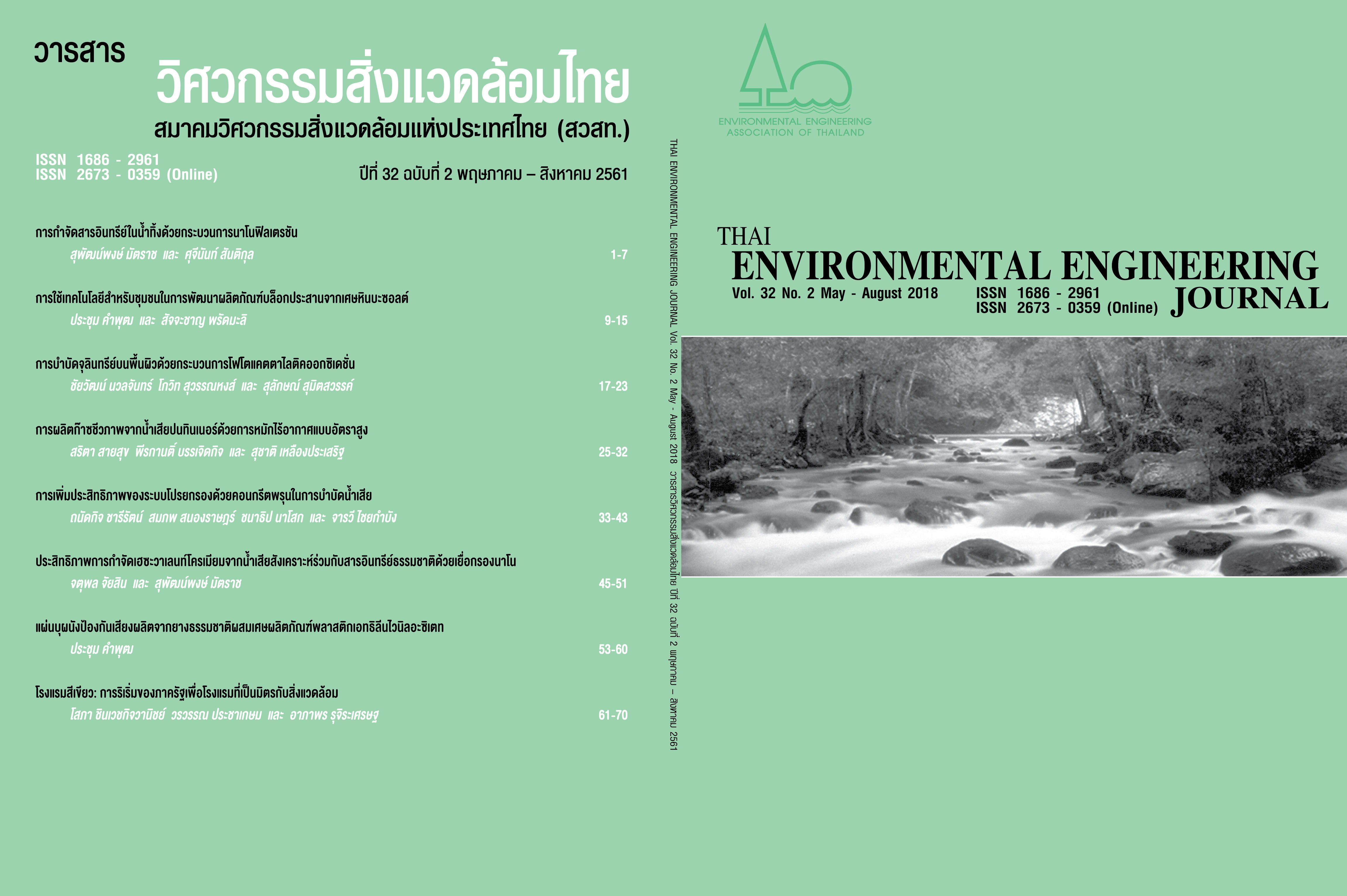Removal of Effluent Organic Matter (EfOM) by Nanofiltration Membrane
Main Article Content
Abstract
Membrane process is one of the advanced wastewater technologies, which provides high water quality, water quantities with short operation period, and removes contaminated effluent organic matter. This process is significantly useful to improve water quality for water reuse process. This research studied the removal efficiency of effluent organic matter (Efom) using cross flow nanofiltration membrane (HL4040FN, GE water and process technology). Wastewater effluents, collected from wastewater treatment plants in Ubon Ratchathani University, were pretreated with ion exchange resin and sequentially filtered through 10, 5 and 1 mm cartridge filters. The organic matter from pretreated water was subsequently separated by reverse osmosis. Experimental results revealed that increased Efom concentration caused an increase in solution flux decline, possibly due to organic matter accumulation on membrane surface, thus increasing organic matter removal. Increase pH solution resulted in decreasing permeate flux, while nanofiltration membrane could remove relatively high effluent organic matter about 94-98%.
Article Details
References
[2] Marhaba, T.F., Pu, Y. and Bengraine, K. 2003. Modified dissolved organic matter fraction technique for natural water. J. Hazard. Mater. 101: 43-53.
[3] Shon, H. K., Vigneswaran, S., Kandasamy, J. and Cho, J. 2007. Characteristics of effluent organic matter in wastewater. Eolss, Oxford.
[4] Barker, D. J., Salvi, S. M., Langenhoff, A. A. and Stuckey, D. C. 2000. Soluble microbial products in ABR treating low-strength wastewater. J. Environ. Eng. 126(3): 239-249.
[5] Bruggen, B.V. and Vandecasteele, C. “Removal of pollutants from surface water and groundwater by nanofiltration: overview of possible applications in the drinking water industry”, Environmental Pollution. 122(3): 435-445; April, 2003.
[6] Uyak, V., Koyuncu, I., Oktem, I., Cakmakci, M. and Toroz, I. 2008. Removal of trihalomethanes from drinking water by nanofiltration membranes. J. Hazard. Mater. 152(2): 789-794.
[7] Mattaraj, S., Phimpha, W., Hongthong, P. and Jiraratananon, R. 2010. Effect of operating conditions and solution chemistry on model parameters in crossflow reverse osmosis of natural organic matter. Desalination. 253(1-3): 38-45.
[8] Jarusutthirak, C., Mattaraj, S. and Jiraratananon, R. 2007. Factors affecting nanofiltration performances in natural organic matter rejection and flux decline. Sep. Purif. Technol. 58: 68-75.
[9] Mattaraj, S. and Kilduff, J. E. Effect of natural organic matter properties on nanofiltration fouling. RSID 4th. Proceeding of the forth Regional Symposium on Infrastructure Development in Civil Engineering, Bangkok, Thailand, on April 3-5, 2003.
[10] Kilduff, J. E., Mattaraj, S. and Belfort, G. 2004. Flux decline during nanofiltration of naturally-occurring dissolved organic matter: effects of osmotic pressure, membrane permeability, and cake formation. J. Membrane Sci. 239(1): 39-53.
[11] Cho, J., Amy, G. and Pellegrino, J. 2000. Membrane filtration of natural organic matter: comparison of flux decline, NOM rejection, and foulants during filtration with three UF membranes. Desalination. 127(3): 283-298.


